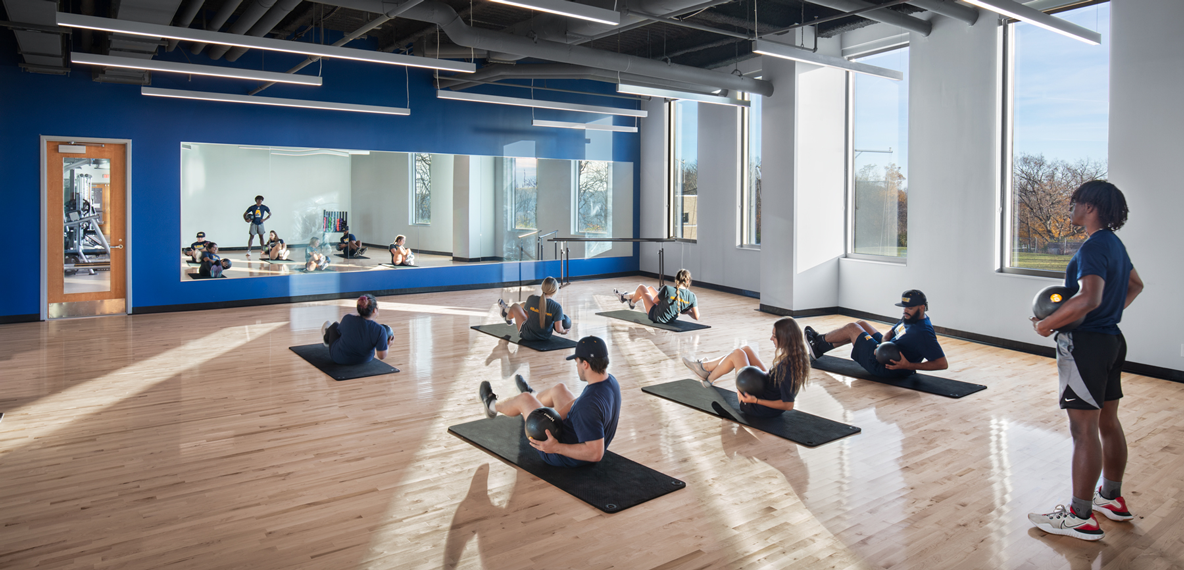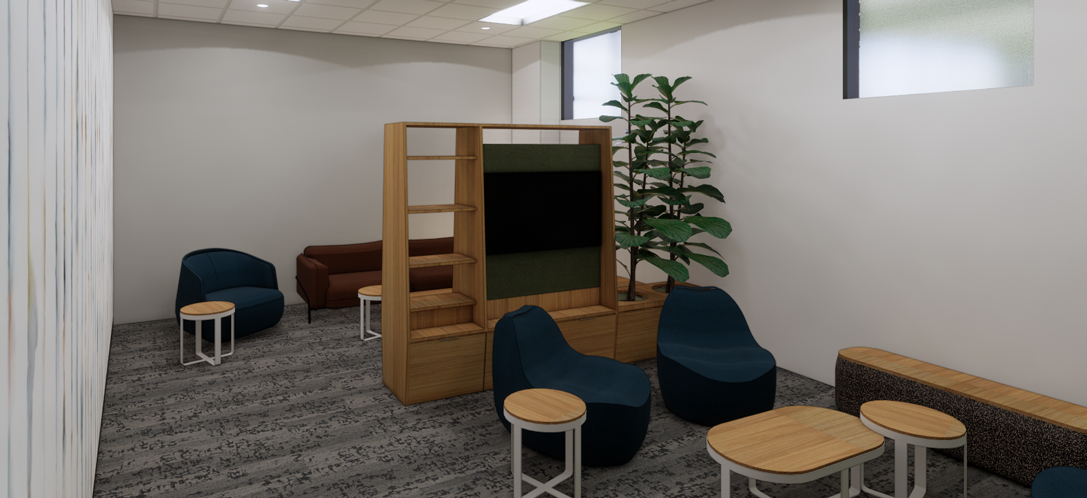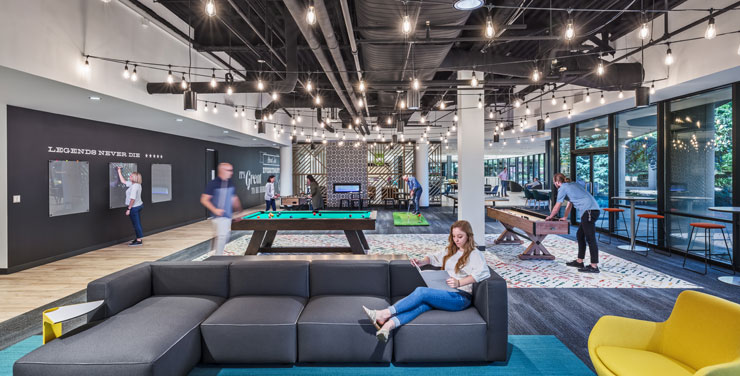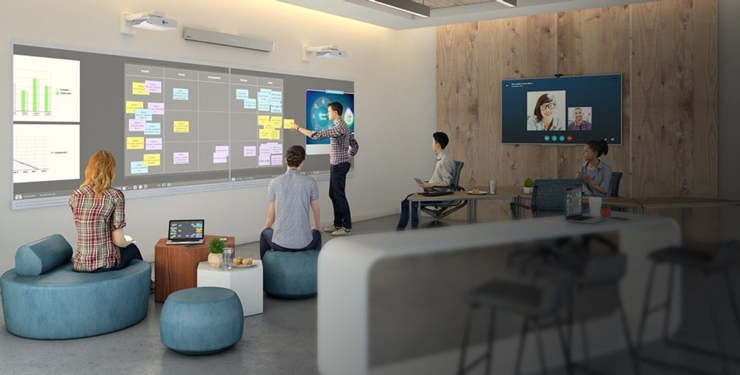
Beyond Academics: The Importance of Holistic Wellness and Personal Growth in Higher Education

When discussing the needs of 21st-century students, the buzzword "holistic" often emerges. This term has become increasingly popular in higher education, as institutions emphasize not just enrolling a diverse student body but also supporting their overall well-being and success, both academically and personally, throughout their college journey and into their future careers.
The “Global Wellness Institute” defines wellness as more than just physical health and includes at least six dimensions: physical, mental, emotional, spiritual, social, and environmental.
Today, students perceive the journey toward holistic wellness and personal growth as an essential part of their higher education. In this context, institutions play a pivotal role. It’s about adapting current programs and fostering a collaborative environment across multiple departments, programs, and divisions. This collective effort is crucial in guiding and supporting students along this transformative path.
Physical Wellness is More Than Just Sports and Medicine
When considering physical wellness on college campuses, the emphasis often falls on sports teams. However, campuses must promote varsity sports programs without alienating the general student population. Physical fitness spaces should be inclusive and designed for all body types and skill levels. It's important to consider that a beginner may not feel comfortable starting their fitness journey next to a powerlifter from the football team. Administrators should consider if one large facility is the model or if small pockets of “community” based workout spaces could better fit their campus.
Alternatively, large fitness spaces can be subdivided with screening techniques and even hard walls to provide privacy. Group fitness spaces that benefit from natural light should have direct access to the exterior but limited internal glazing from onlookers. An example of this is the Mount St. Joseph University Centennial Field House. This facility is geared towards the general student population, separate from the student-athletes, and features a multipurpose group fitness room adjacent to the weight room, which is well-screened and full of natural light.
Additionally, campus health services and clinics must proactively approach health. These campus resources typically offer a multitude of services, from immunizations to the treatment of common colds, flu, and chronic illnesses like allergies. Equally important is their role in health and wellness education.
Dieticians and nutritionists should empower students to make informed nourishment decisions and consider collaborating with dining services to offer healthier options across campus. A shining example is on Manchester University’s Fort Wayne campus, where the Dean of Student Life and Professor Jennifer Campbell partnered with dining services to introduce healthier options at their new food service venue. Located in a suburban area filled with fast food options, the campus offers more nutritious alternatives, helping students achieve their personal health goals and extend their time on campus, ultimately benefiting their academic goals.
"In order for the brain to be able to learn, the body needs to be fed with healthy food. Having a food venue on campus where students can get healthy breakfast and lunch options at affordable prices helps support their learning,” said Campbell.
The space, designed by BHDP as part of the renovation and expansion of the Fort Wayne Health Sciences campus, supports student goals of eating fresh, clean foods such as salads, sandwiches, and smoothies. The food service venue has seen high usage from students and staff members, even during its first semester open.
Other proactive steps toward integrating modern wellness design principles include creating inviting stairwells to encourage taking steps instead of elevators, incorporating natural light in learning and study spaces, and utilizing clean air practices such as high outside air percentages and bi-polar ionization. These techniques, applicable to any project, help combat obesity and sickness and promote mental wellness.
Administrators Can Address Mental Wellness in Multiple Ways
The normalization of mental health services, such as counseling services, has benefitted society by exposing and treating various mental health diagnoses. The American Psychological Association cites that between 2005 and 2017, there has been a 52% increase in diagnosis in adolescents and a 62% increase in young adults 18-25. This places formal diagnosis on approximately 13% of the population.
Many higher education institutions are prioritizing the creation of accessible mental health services to ensure students can receive professional help tailored to their needs. As students entering higher education in the next decade will likely have experience with school-based psychologists who supported them through post-pandemic challenges, maintaining this access to professional therapy is crucial for their continued success. It is essential to promote these on-campus resources widely so that students, especially those unfamiliar with mental health services, can learn about and utilize these offerings without fear of stigma or judgment.
Similar to how physical wellness can prevent physical illness, mental health can also be addressed proactively. K-12 schools have a growing interest in “zen” or “low-distraction” rooms where students can reduce distractions and center themselves. These spaces are becoming popular in higher education, too. At the UK Martin-Gatton Agricultural Sciences Building, two new wellness-styled spaces will offer several activities for students to take a break while remaining co-located in an academic classroom building instead of in the student center. These activities can include yoga, low-distraction time, and even arts and crafts hours as a form of stress relief and recentering.

The UK Martin-Gatton Agricultural Sciences Building will feature two new wellness spaces, allowing students to relax and relieve stress.
Carmen Agouridis, Senior Associate Dean at the Martin-Gatton College of Agriculture, Food and Environment (CAFE), believes educating students about mental health is also essential for the community. “Issues of mental health access and stigma are particularly prevalent across the agriculture industry and rural America at large,” Agouridis said. “While we want to support and empower our students throughout their studies, I also hope they can extend these lessons into the communities they will someday serve.”
Students are also excited about the new wellness spaces on campus. “It’s great to have this kind of space on the south side of campus,” said Sierra Tichnell, a Senior Animal Sciences student and CAFE Student Council President. “Having to travel across campus can be a deterrent, so it’s great to have more access to mental health services close by. Just having a safe space to open up is such a big step in the right direction.”
Mental health and wellness can also be addressed in less formal spaces. Residential life provides space for personal wellness activities such as hobbies and even self-care rituals like painting one’s nails or a Saturday night eye mask. Some personal care activities include group or community activities like going to the salon or barber shop, which enriches one’s appearance and soul. While seemingly basic life activities, as students transition into adulthood, the value of these activities becomes more apparent and expands beyond basic personal hygiene. Administrators should consider how they can create space to promote these activities and craft a brilliant student experience.
According to Ipsos’ 2023 Thriving College Students Survey, thriving students are more likely to socialize and practice several healthy behaviors, such as spending time outside, getting good sleep, exercising, eating healthfully, and engaging with their faith. To promote a thriving culture, campuses should promote three takeaways from the survey results, which include:
- Educating students on behaviors that support good mental health and providing accessible ways to adopt these behaviors.
- Promoting on-site programs and amenities like fitness centers, green spaces, and walking paths to enhance students’ well-being.
- Organizing events and activities that foster connections and well-being.
Building Lifelong Skills: The Growing Trend of Higher Education Coaches
Based on a student life survey and interviews at Bethany College, students are seeking an experience that transforms them into adults and holistic people. They want more than just strong academics from their institutions. They wish to develop their soft skills and even entrepreneurial skills to prepare them for all aspects of life, from the workplace to their homes.
A growing trend is “higher education coaches,” who assist students in maximizing their experience. One of BHDP’s clients, Bethany College, recently received a grant to create a space in the heart of campus—the library—for students to find such counselors or coaches. They will guide students through their first two years of college, assisting them in selecting classes, connecting with academic advisors, navigating clubs, scheduling special accommodations, and weaving them into the entire network of the campus fabric to help them maximize their experience.
Lori Weaver, Vice President of Institutional Advancement at Bethany College, said, “The design of our new student success and advising space includes quiet study areas, collaborative workspaces, and comfortable seating, ensuring students feel secure and motivated to engage in their education. This space will undoubtedly enhance the overall student experience, equipping them with the skills and confidence needed to thrive—not just during their time at Bethany, but well into their futures.”
Empowering Students Through Holistic Wellness: Steps Toward a Brighter Future
Holistic wellness and personal growth are essential to a thriving higher education environment. As we navigate students through these pivotal years, campuses must address all dimensions of wellness—physical, mental, emotional, spiritual, social, and environmental.
Institutions that invest in holistic wellness programs enhance the student experience and foster a culture of well-being that extends beyond the classroom. Minor, thoughtful adaptations can lead to significant, long-term benefits for students. These changes can create inclusive fitness spaces, expand access to mental health services, promote healthy eating options, and support personal growth through innovative coaching programs.
BHDP has mapped the six dimensions of wellness and how they can be allied to the campus fabric. I am happy to provide a free consultation with campus leaders to discuss minor changes and strategies that can significantly impact student wellness.
Let’s get to work. Complete our contact form today for a free consultation.
Author
Content Type
Date
June 26, 2024
Market
Practice
Topic
Wellness
Innovation



